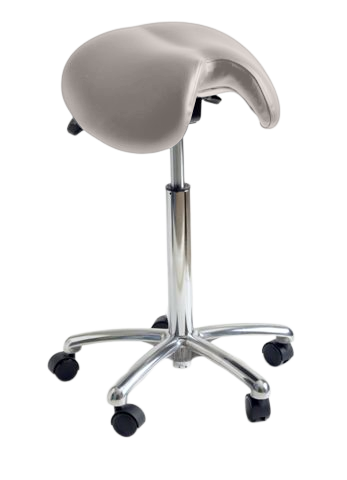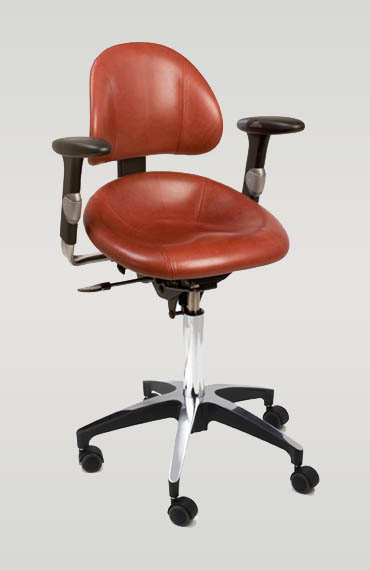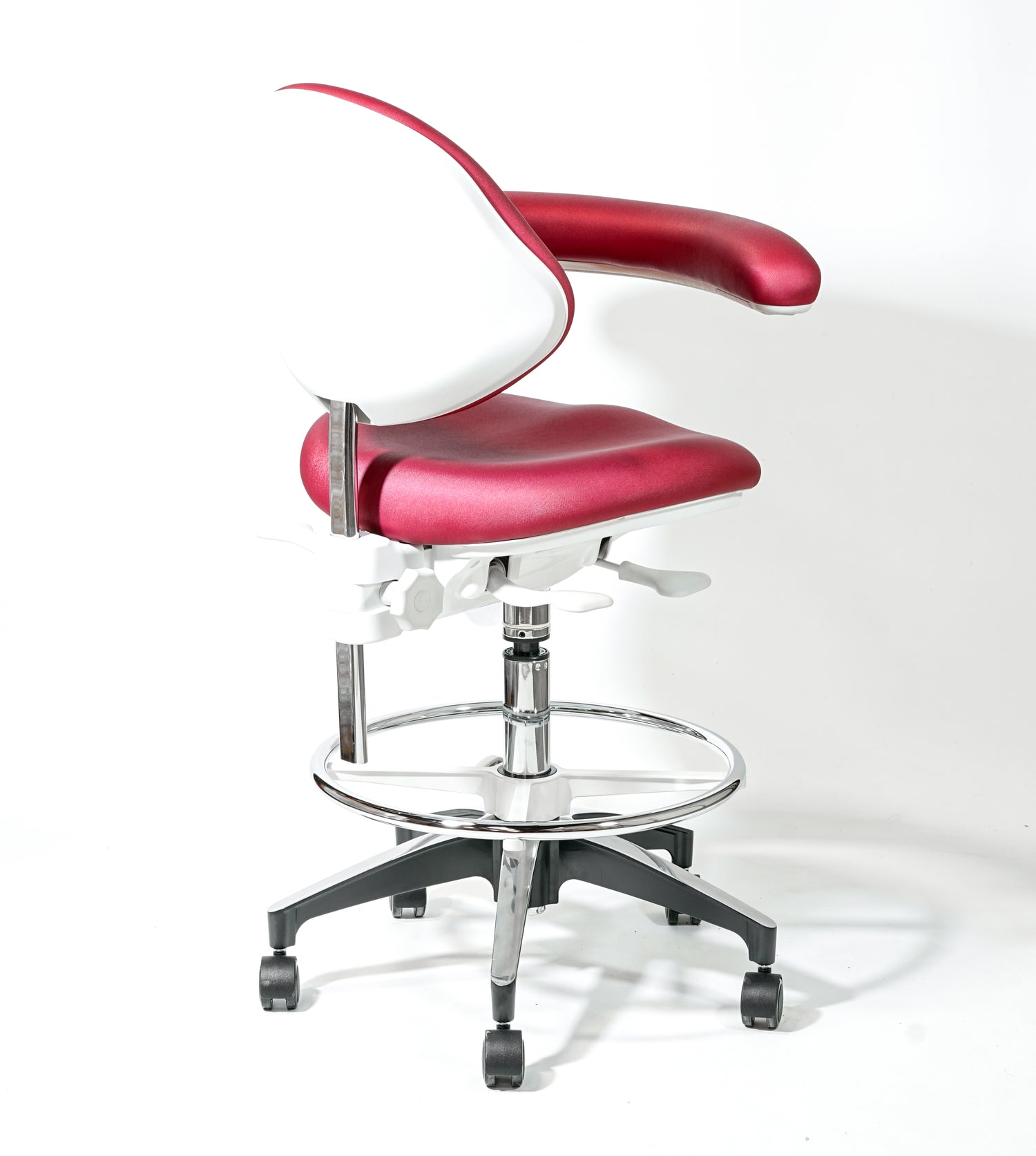
Björn Saddle Stools
When first using a saddle stool, different muscles in your back and abdomen will have to adjust to changes in your posture. Some discomfort may be experienced the first few days — even a week or two — until your core muscles have fully adjusted.
Try not to sit for more than 45 to 60 minutes before taking a break. Get up, stretch … take a deep breath!


How to get seated
Grab the front of the saddle seat with one hand, and get on the seat from behind. Or grab the front of the seat, with hands between your legs, and pull it forward. Seat too high to get on? Lean on seat to lower. See below!
Adjust Seat Height Lever on left side Pull up on lever, raise/lower yourself to obtain the 45 degree leg-angle. Release lever.
Adjust Tilt Lever on right side. Move lever to up position and hold while pulling up on the front of the saddle stool to zero degree tilt. Release lever. Starting from a level seat, adjust forward tilt to a comfortable no-slouch-position.
Important Feet positioned towards the back of the stool. Heel, hip, shoulder approximately in a straight line. Note: For Series 400 Classic and 500 Classic Narrow. A slight forward tilt will reduce the pressure on the genitals for male users.
Sitting low — legs at less than 45 degree — you can still get the benefit from an upright, posture. Move your feet back under the seat to obtain the 45 degree angle (135 degree torso to leg.) Also try a slight forward tilt. Even with only one foot behind you — the other needed forward, e.g. to operate controls – your posture will benefit.
Stand/Sit Raising the seat to a seat height just slightly below standing – with the seat slightly tilted forward — you will be able to sit down and rest … and take weight off your legs and feet.
Bruno Ergo-Eco Office/Work Chair
Starting: Turn the Chair-Adjustment-Lever, forward to all vertical. Position your buttocks all the way back in the seat. Push/lean back on the backrest, moving the seat, and backrest, to an all upright seating position.
Adjust Seat Height: Turn the Lever, slightly backwards while lifting/lowering yourself to obtain desired sitting height. A seat height with knees 2-3” lower than the hip – with a slight tilt (to set tilt see below) to minimize pressure under your thighs — will help to keep your back’s natural S-curve in a back-saving erect posture with the ribcage open for deep and easy breathing.
Adjust Backrest: Pull up on lever on back of backrest to unlock. Move to fit in the small of your back. 5 degree – forward turn/twist of the Chair-Adjustment-Lever allows for adjustment of just the backrest.
Adjust Seat Tilt: Turning the lever past 45 degrees and leaning forward allows adjustment of the seat tilt. Set seat tilt so pressure under your thighs is minimized. Release lever to lock seat position. (Re-adjust backrest as needed.)
Free-Float: Setting the Lever in the All-forward-vertical, releases the backrest to move with you when leaning forward and back — for constant lumbar support — and back strengthening exercise.
Try not to sit for more than 45 to 60 minutes before taking a break. Get up, stretch … take a deep breath!



